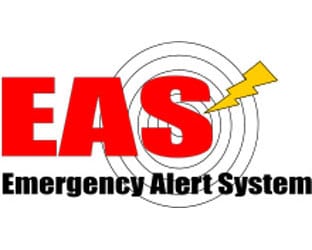WASHINGTON, D.C. — Eight months and four weeks ago, the FCC conducted a nationwide emergency alert test, with radio and TV stations sending alerts via the Emergency Alert System and mobile phones receiving Wireless Emergency Alerts. On Thursday, a report as to the efficacy of the test was released by the Commission.
The nationwide test, the FCC concluded, demonstrated that the large majority of EAS Participants — radio and television stations, cable television systems, direct broadcast satellite (DBS), Satellite Digital Audio Radio Service (SDARS), digital audio broadcasting systems, and wireline video systems — reported successful receipt and retransmission of the nationwide test.
“The test demonstrated that the national EAS distribution architecture is largely effective as designed,” the FCC reports. “As anticipated, the test also shed light on operational readiness failures that prevented some EAS Participants to receive and/or retransmit the test alert.”
Here’s the good news: The test message was received by 96.6% of EAS participants, up from 89.3% in 2021.
The overall retransmission success rate was 93.6%, an increase from 87.1% in 2021.
“This significant improvement is likely due to initiation of the 2023 test alert via Common Alerting Protocol (CAP), which introduced additional resiliency that was not available during the over-the-air-only 2021 nationwide test,” the FCC concludes.
However, while test participants reported less than one-third as many performance complications as compared to 2021, more test participants reported equipment configuration issues and equipment failures.
At the time of the test, approximately 23% of EAS equipment units representing over 4,500 EAS Participants, were either using outdated software or were using equipment that no longer supported regular software updates. Test results demonstrated that fully up-to-date equipment had the highest receipt and retransmission rates (97% and 95%, respectively), whereas equipment with software that is no longer supported had the lowest receipt and retransmission rates (90% and 85%, respectively).
Five of the six poorest-performing geographic regions were territories of the United States.
These territories were the Northern Mariana Islands (20.0% retransmission success), Guam
(33.3% retransmission success), American Samoa (66.7% retransmission success), the U.S. Virgin Islands (88.9% retransmission success), and Puerto Rico (89.7% retransmission success).
Based on these results, the Public Safety and Homeland Security Bureau of the FCC recommends that the Commission adopt rules to improve the operational readiness of EAS participants and participating CMS providers, as well as ensure that EAS participants are installing software updates in a timely manner and have plans for replacing equipment
that is no longer supported by the manufacturer.
The Bureau also recommends actions that EAS participants and participating Commercial Mobile Service Providers should take to improve the reliability and reach of WEA and the EAS, including in the territories of the United States.
PSHSB also recommends that Congress require all CMS Providers to support WEA.





